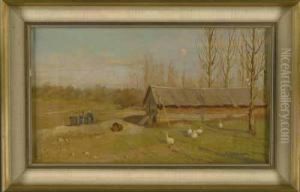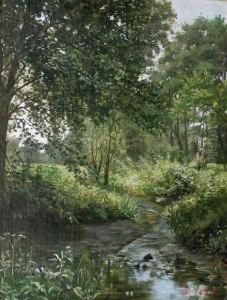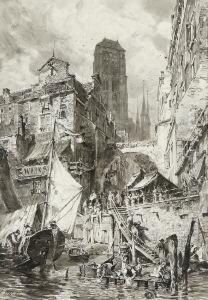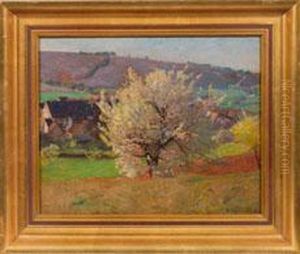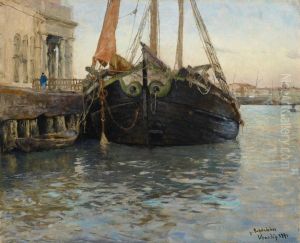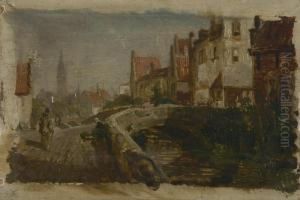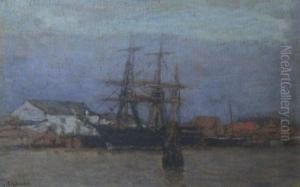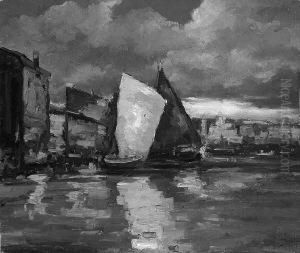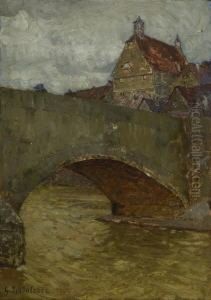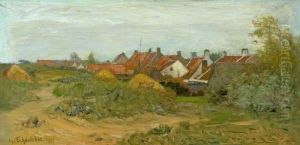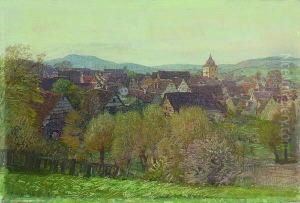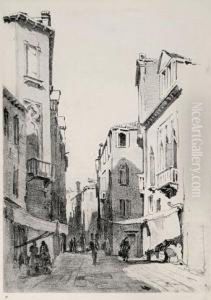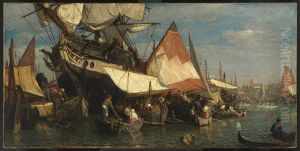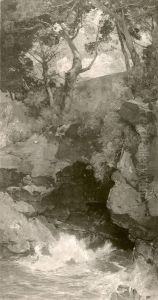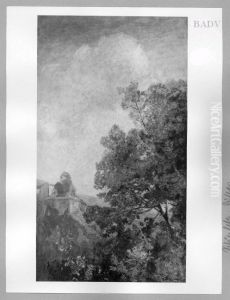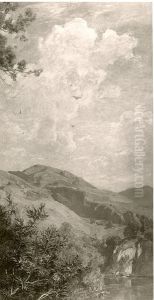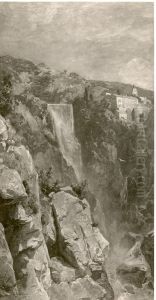Gustav Schonleber Paintings
Gustav Schönleber was a German landscape painter born on June 28, 1851, in Bietigheim, Kingdom of Württemberg. He was known for his mastery in depicting naturalistic landscapes and seascapes with a remarkable sense of atmosphere and light. Schönleber was influenced by the Dutch landscape painters as well as the Barbizon school in France.
Educated initially at the Stuttgart Art School, he further honed his skills under the tutelage of the landscape painter Oswald Achenbach at the Düsseldorf Academy. Schönleber's early works were characterized by their meticulous detail and a traditional approach to landscape painting. However, as his style evolved, he became more focused on capturing the mood and changing light conditions of the scenes he painted.
In 1873, Schönleber moved to Karlsruhe, where he became a professor at the Grand-Ducal Baden Art School. He was a significant figure in the art community there and influenced a generation of German landscape painters. His teaching philosophy emphasized the importance of plein-air painting, encouraging students to work outdoors directly from nature, which was a progressive approach for the time.
Schönleber traveled extensively throughout Europe, drawing inspiration from various landscapes, including the coasts of the North Sea and the Mediterranean. His travels also took him to the Netherlands, where he studied the works of the Dutch masters, which had a lasting impact on his approach to landscape painting.
Throughout his career, Gustav Schönleber exhibited his works widely and received numerous awards. His paintings were celebrated for their poetic interpretation of nature and their technical excellence. He was also a member of several art associations and academies, including the Berlin Academy.
Towards the end of his life, Schönleber continued to paint and exhibit, although his health was declining. He passed away on December 29, 1917, in Karlsruhe, leaving behind a significant body of work that continues to be appreciated for its contribution to the genre of landscape painting. Schönleber's legacy is preserved in the form of his paintings in museums and collections, as well as his influence on the generations of landscape artists who followed him.


